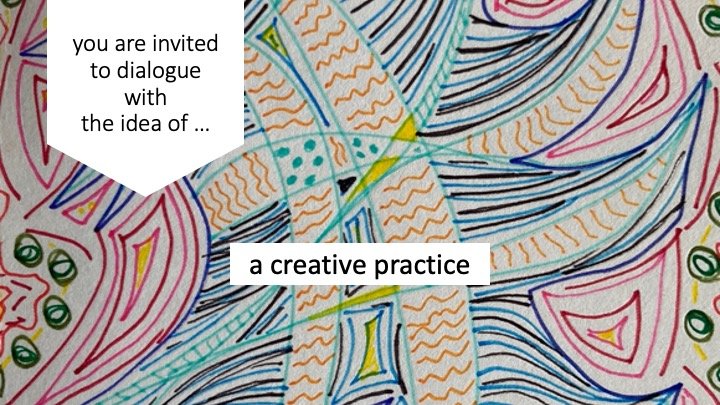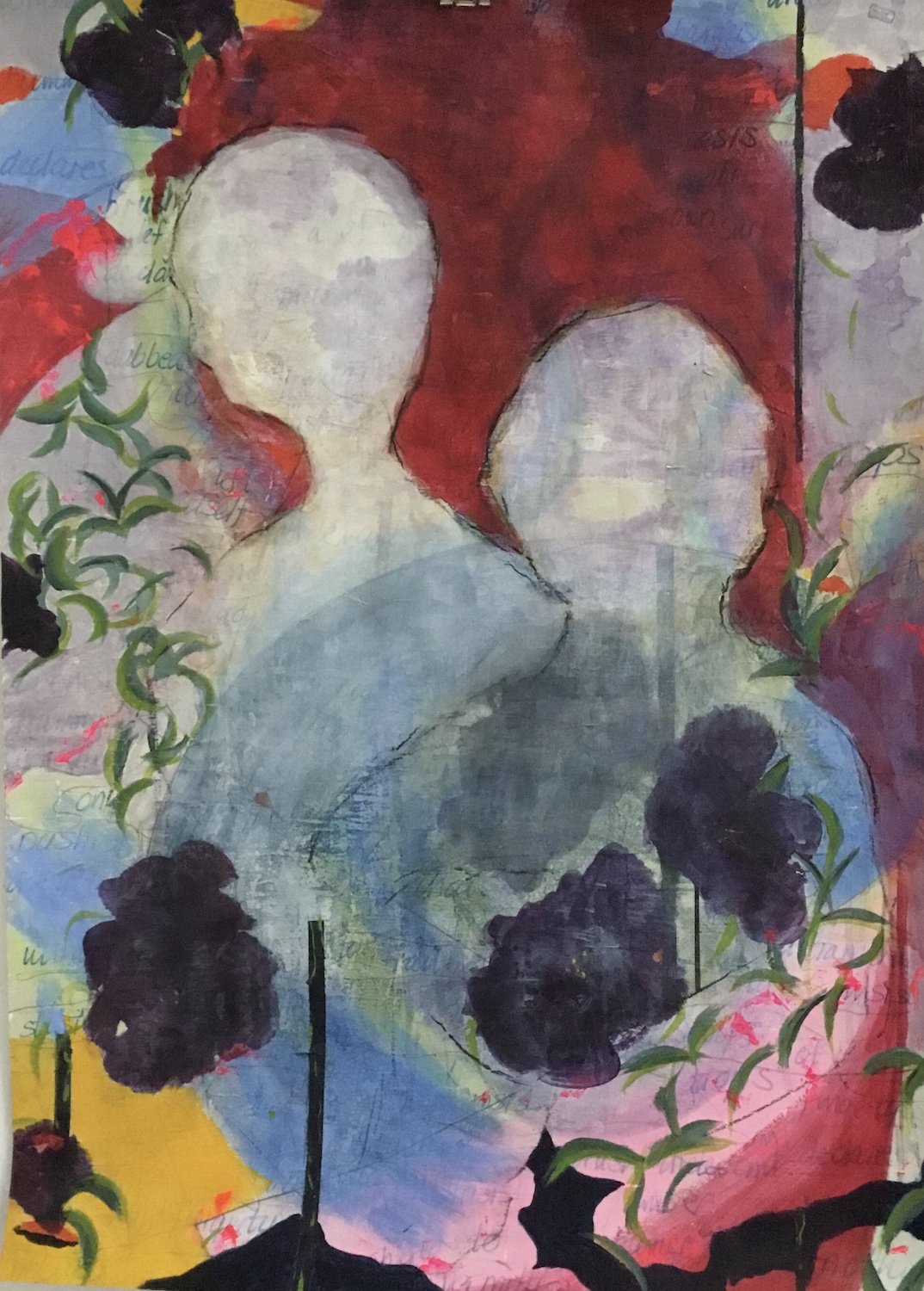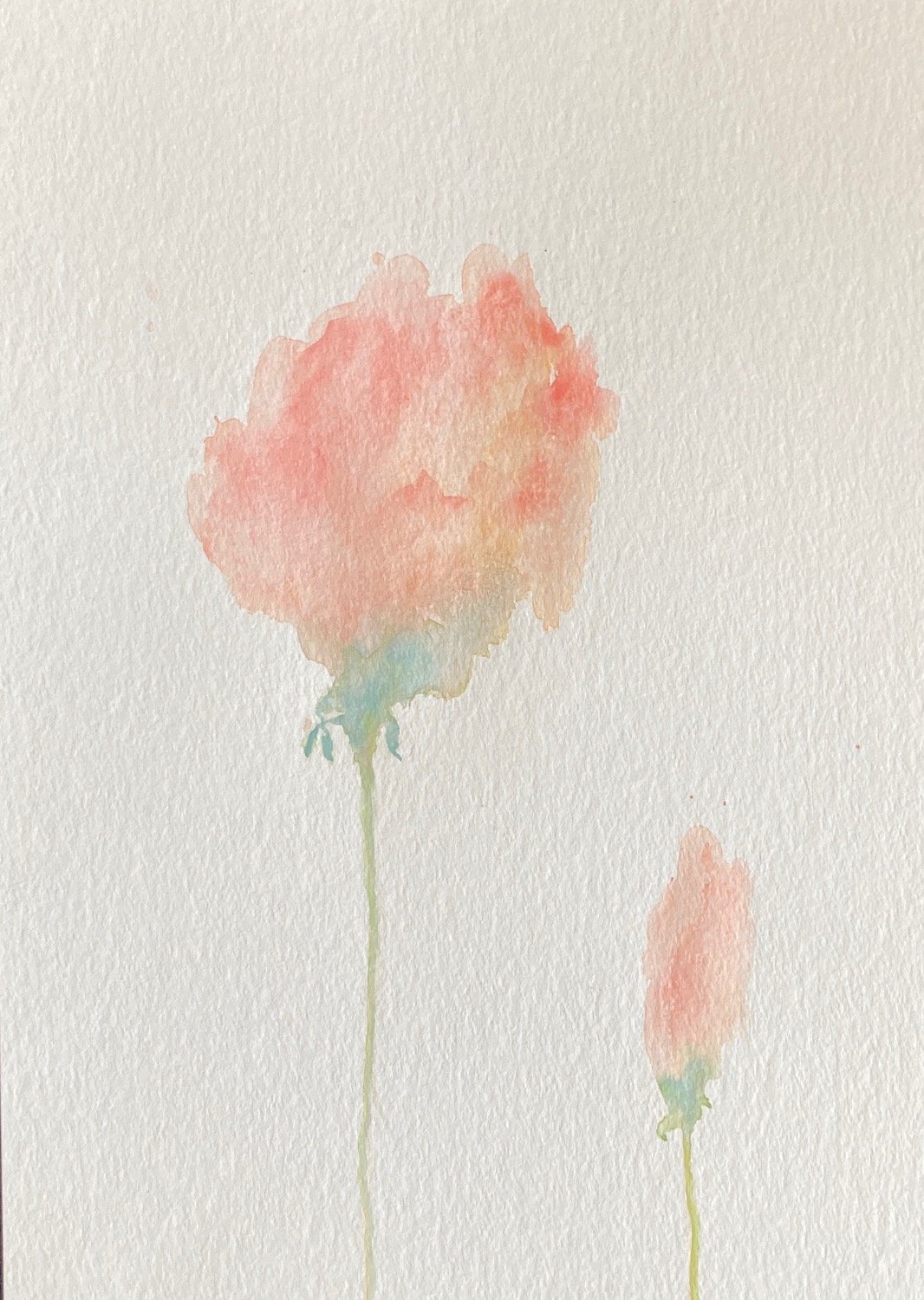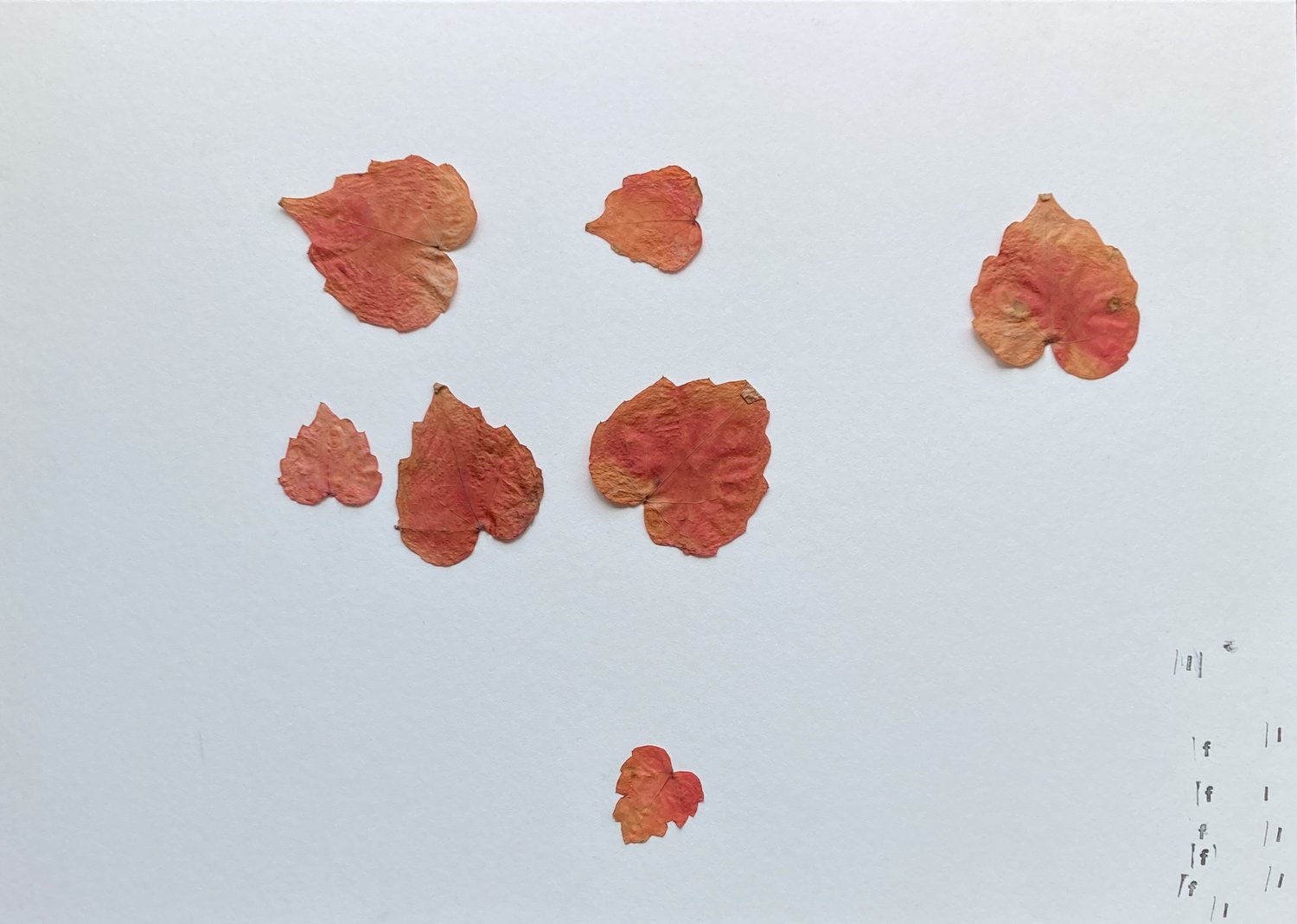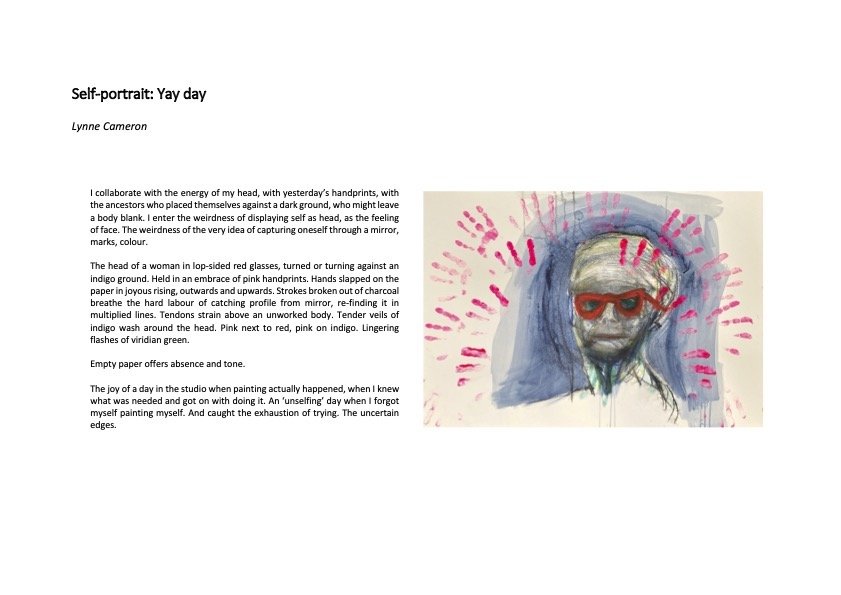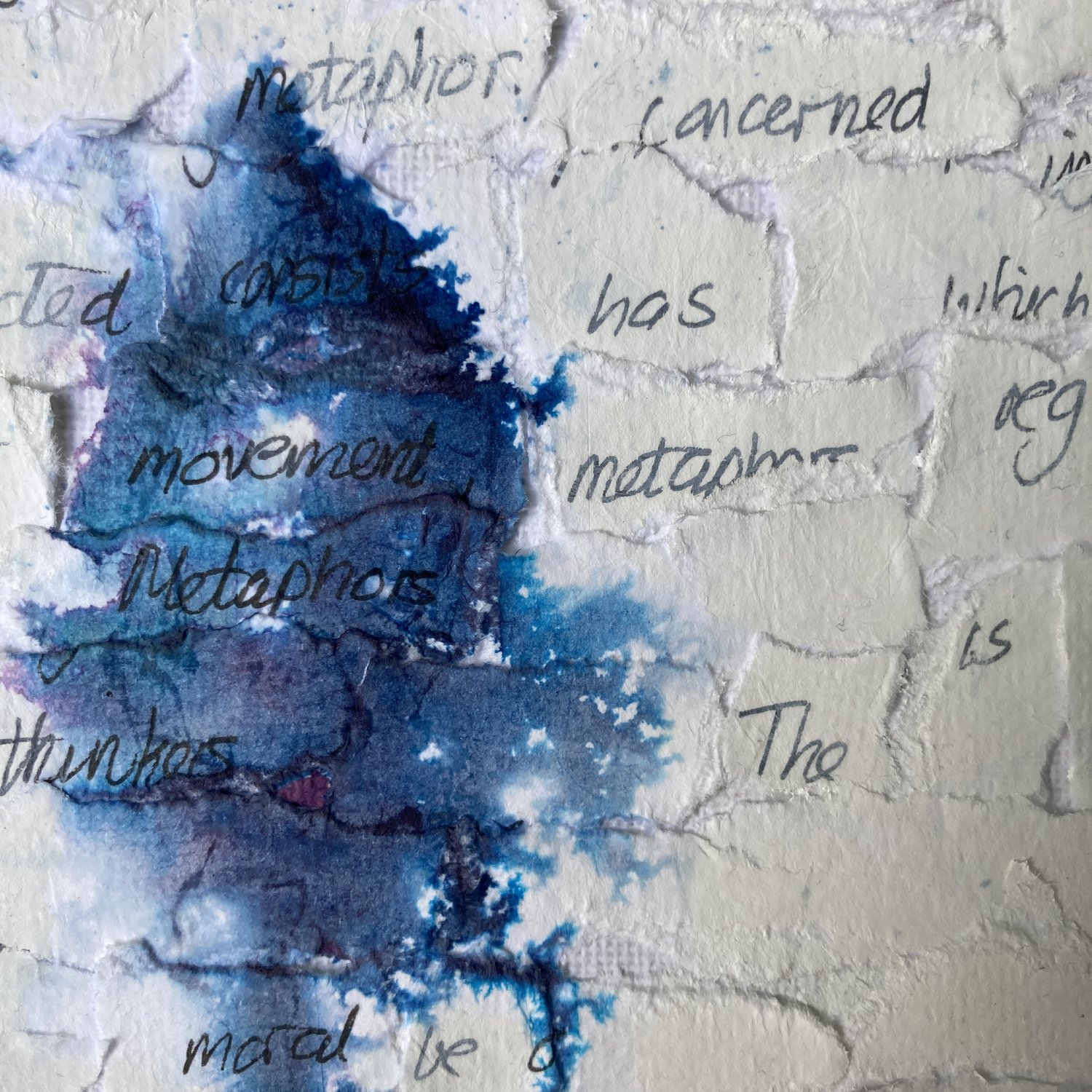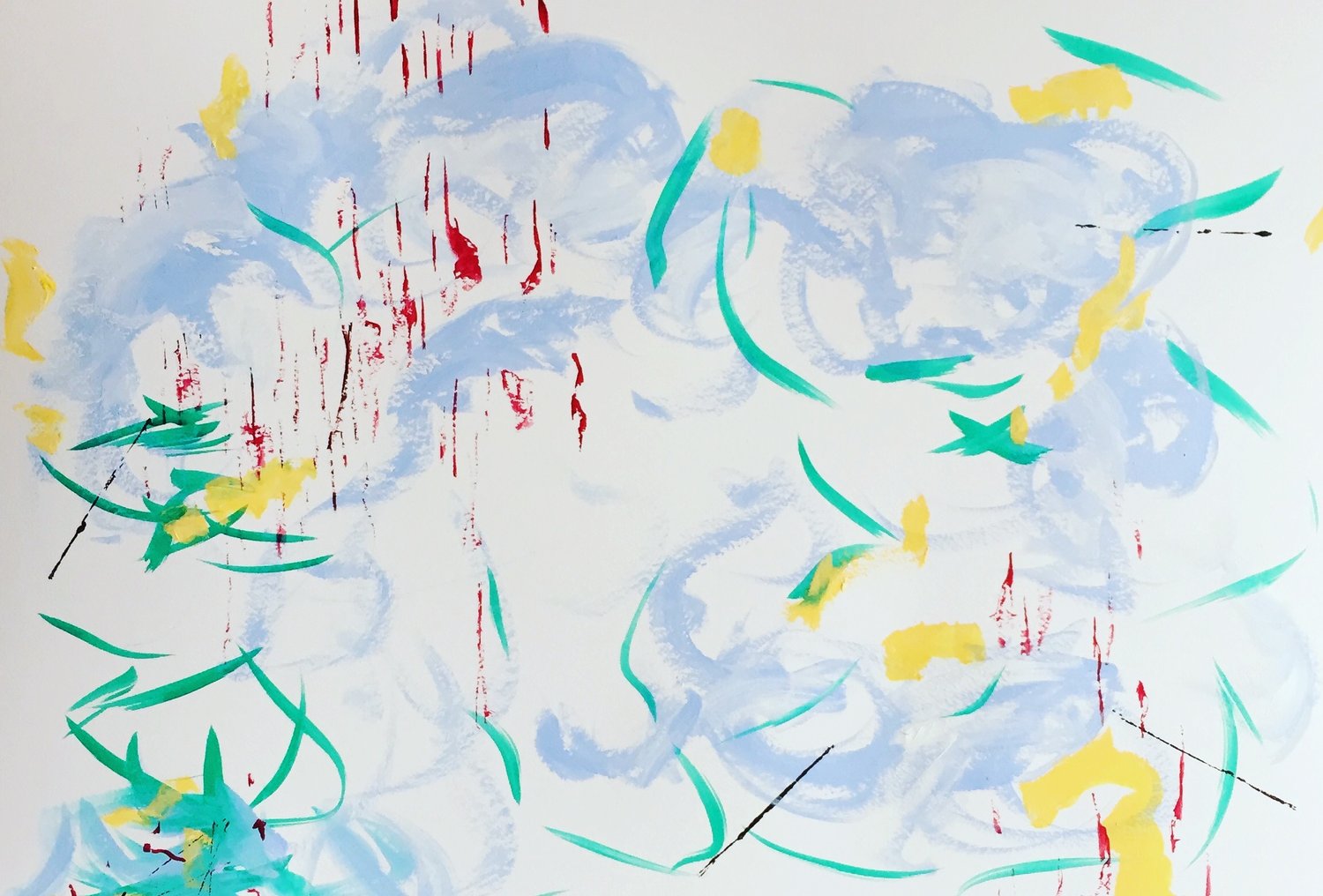I spent a long coffee break going through my turquoise notebook – that’s the one where I write notes about my reading. In my mind that day was how to think about some ‘self-portraits’ I’d been painting, how to tie them in to my practice. I re-read notes from poetry workshops to see what spoke to me now. Notes from zoom calls with my friend. Notes about ideas and notes to self. Sometimes screams of agony. Notes and connections. More of an on-going conversation than notes.
The notebook’s timespan included encounters with Laurie Anderson’s Norton Lectures , Jane Hirshfield workshop at Coffee House Poetry, Bracha Ettinger on matrixial theory, Griselda Pollock on Charlotte Salomon, Gabriel Josopovici on Modernism, and the Weird Studies podcast. Iris Murdoch and Simone Weil on attention, on ‘unselfing’, linger in the background always.
My conversation with the notebook turned itself into a list of questions. I realised as I listed them that these were the questions I needed to ask of the portraits.
I gave each portrait half a day to answer the questions. By writing in response to the paintings, I wanted to lead myself deeper into the labyrinth, to explore the mystery while retaining the mystery. Not to ‘unpack’ or explain – impossible – to notice more. The answers became a starting text, to be worked into something more poetic until it fitted, resonated, joined forces, with the painting.
I’m still working out how to best present these hybrid artworks, exhibition or book or … Meanwhile, here are the questions. Perhaps they would work for you? Or perhaps you could find your own set from your notebook?
Questioning a painting
What can be seen in the painting?
What happens with attention?
where is attention drawn on looking at the painting?
what was my attention drawn to when I was painting?
How does the painting gesture to beauty and goodness and tenderness? and to the shadow?
What’s being amplified?
Where’s the uncertainty?
What’s the weirdness?
What’s oscillating? What dynamics are in action?
Any collaborations going on? e.g. with ideas, with other painters
What has returned in a new way?
What transformation has occurred / is offered?
What possibilities are being held in creative tension?


